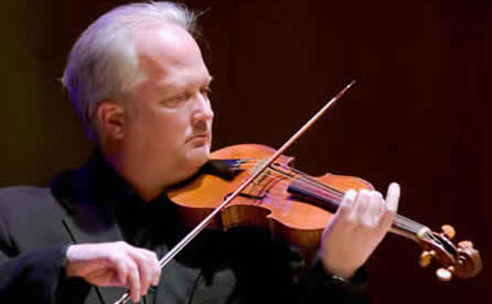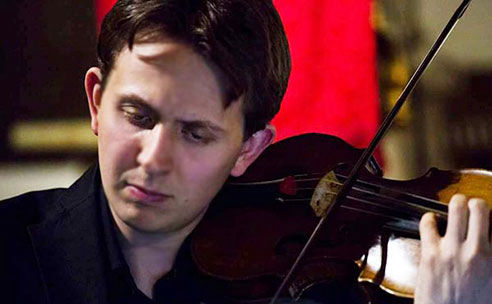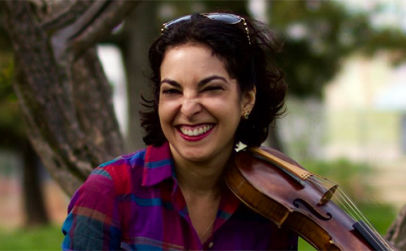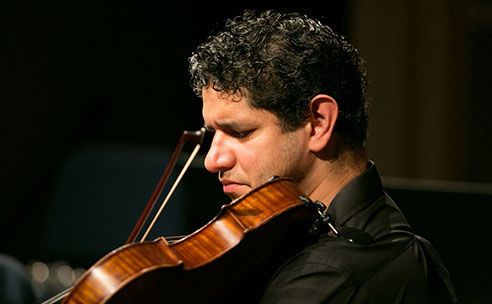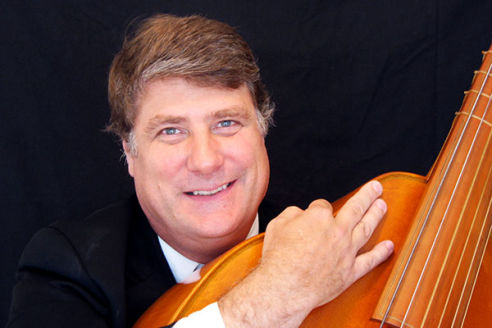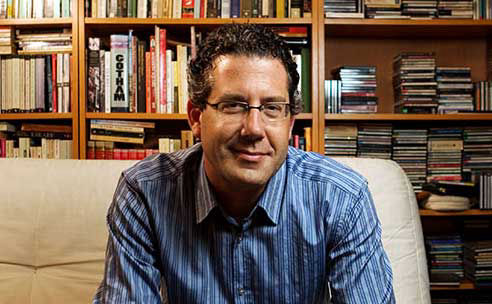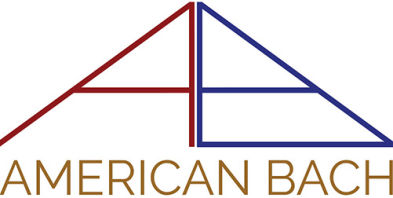Cynthia Keiko Black (violin) enjoys performing at home in the Bay Area and across the United States as a violinist and violist playing music from several centuries. Born in Dallas, Texas, she grew up listening to her mother practicing piano and began her musical education as a toddler learning piano from her mother’s lap. Cynthia performs regularly with the American Bach Soloists and can be found on stage in California with other ensembles including Voices of Music, Valley of the Moon, Ars Minerva, Musica Angelica, and the Carmel Bach Festival Orchestra. Across the country, she makes guest appearances with ensembles including the Atlanta Baroque Orchestra, Pacific MusicWorks, Les Délices, and Quicksilver. She enjoys playing chamber music as a member of the Costanoan Trio, a period-instrument piano trio, and Incantare, an ensemble of violins and sackbuts. Cynthia holds modern viola degrees from the Cleveland Institute of Music, and after becoming entrenched in the world of early music, she stayed in Cleveland to complete a doctorate in Historical Performance Practice at Case Western Reserve University. She also teaches young people at the Crowden School’s Community Program and in her free time enjoys being in the kitchen and her backyard vegetable garden.
Gail Hernández Rosa violin grew up in Puerto Rico, where music is a strong part of everyday life. Her love for music started at a young age, allegedly singing before speaking. Supported by her father’s fascination with classical music and his training as a baritone, she started violin lessons at age three. Her career has taken her all over the world, living in several continents and performing with groups such as Gabrieli Consort & Players, Florilegium & Scottish Chamber Orchestra. Her interest in period instrument performance led her to London where she gained a Master’s degree from the Royal Academy of Music. Thanks to her cultural immersion and Scottish roots, her love affair with baroque and Celtic folk music further blossomed, inspiring her to co-found Beneath A Tree - Baroque To Folk. Gail believes in the power of music education, which has led her to be faculty at the Royal Academy of Music Junior Department, Royal Conservatoire of Scotland & Hill House International School. As part of SCO Connects she was chamber music coach/conductor, given Masterclasses in the US & UK and adjudicated the 2019 San Francisco Symphony Youth Orchestra Competition and 2021 Junior Bach Festival. She maintains a private teaching studio, which brings her great joy. Her recordings include Chopin Piano Concertos and Mozart Opera Arias & Overtures with the Scottish Chamber Orchestra (Hyperion Records) and Telemann and Janitsch with Tempesta di Mare (Chandos Early Music). Beneath a Tree - Baroque to Folk’s debut album My Cup of Tea is currently in mixing and editing stages. In her spare time, Gail has a strong yoga and meditation practice. She loves cooking, hiking, swimming and laughing out loud at the many wonders that life offers.
Toma Iliev (violin) is a musician who is focused on historically informed performance. He is the winner of the Leipzig International Bach Competition’s 2014 Christa Bach-Marschall Foundation Prize, and is the winner of the 2013 Indianapolis Baroque Orchestra Concerto Competition. Holder of the Portland Baroque Orchestra’s Charles and Ruth Poindexter Chair, Toma regularly performs with ensembles across the United States including American Bach Soloists, Philharmonia Baroque Orchestra, Valley of the Moon, Trinity Baroque Orchestra, and Clarion Music Society. An avid chamber musician, Toma is a core member of Sonnambula, the first and only period instrument ensemble to hold the position of Ensemble in Residence at the New York Metropolitan Museum of Art. Toma first joined ABS as a part of the 2016 Academy and has since appeared with the ensemble in numerous performances. He can be heard with ABS on recent recordings including J.S. Bach’s Orchestral Suites and “Aryeh Nussbaum Cohen sings Gluck, Handel & Vivaldi”. Toma was a part of the 2020 virtual gala, the “Fridays with Friends” series, and appeared as a soloist with ABS with a memorable performance of Georg Philipp Telemann’s Violin Concerto in A major, “The Frogs,” during the 2019 ABS Festival. A native of Sofia, Bulgaria, Toma discovered his passion for music at an early age. Beginning his studies at the National Music School in Sofia, he is a graduate of Indiana University and of the Juilliard School’s Historical Performance program. In addition to Baroque and Classical violin, Toma can be seen performing on Baroque and Classical viola, viola d’amore, bass and tenor viols, and harpsichord.
Corey Jamason (harpsichord / Academy Co-Director) was born in New York City and developed a fascination with Baroque music as a young piano student growing up in Puerto Rico and Florida. He was introduced to the harpsichord by Anthony Newman while an undergraduate student at SUNY Purchase and then pursued further studies in early music at Yale University and at the Early Music Institute at Indiana University. His fascination with historically informed performance and a love of American musical theater and vaudeville led him and his colleague Eric Davis to create Theatre Comique, an ensemble specializing in reviving late 19th- and early 20th-century American musical theater in historically informed performances. He has performed the “Goldberg Variations” and the Well-Tempered Clavier throughout the United States and his playing of Bach was described in the Los Angeles Times as displaying “the careful, due balance of objective detachment and lofty passion.” From 2007 to 2014 he was artistic director of the San Francisco Bach Choir. Nominated for a GRAMMY® award, his recent recordings include performances with American Bach Soloists, violinist Gilles Apap, recorder player Astrid Andersson, and El Mundo. He is a contributing author to History of Performance, published by Cambridge University Press. He joined the faculty of the San Francisco Conservatory in 2001 where he is director of the school’s historical performance program and professor of harpsichord. Corey has enjoyed working with a variety of ensembles, appearing frequently with American Bach Soloists, with whom he is principal keyboardist, as well as a variety of other groups such as the San Francisco Symphony, Los Angeles Opera, Philharmonia Baroque, Musica Angelica, Camerata Pacifica, Yale Spectrum, and El Mundo.
Steven Lehning (violone) was attending Pacific Lutheran University as an undergraduate when he stumbled upon a used book store that had a nearly complete collection of the Bach-Gesellschaft edition of Bach Cantatas in mini-score; each for only a nickel! Finding these while taking a class in Lutheran theology set him on a trajectory that prepared him to eventually become one of the founding members of the American Bach Soloists. A remarkable and versatile musician who is equally at home with violas da gamba, violones, contrabass, and historical keyboards, he has worked with many of the luminaries of the early music world including Jeffrey Thomas, John Butt, Andrew Parrott, and Ton Koopman. He has performed at the acclaimed Santa Fe Chamber Music Festival, as well as the Early Music Festivals in Boston and Berkeley. After finishing his undergraduate degree and while waiting to see what performances might come his way, he worked as an apprentice learning the art of French bread and pastry. Always curious about the entirety of the world in which the music he plays came from, he dove into many aspects of early music. In addition to performing with ABS, he is their librarian, and tunes harpsichords and organs for rehearsals and performances. On the scholarship side, he has pursued graduate studies in musicology at the University of California (Davis). Steve has recorded on the American Bach Soloists, Delos, EMI, Harmonia Mundi, and Koch Labels.
Ramón Negrón Pérez (viola) began his musical career at the age of nine in his native Puerto Rico. Two years before completing his degree from the Puerto Rico Conservatory of Music, at 18 years old, he auditioned and was accepted as a member of the Puerto Rico Symphony Orchestra. Over the next 16 years Ramón’s orchestral experience was rigorous, varied and full of opportunities. Ramón developed an affinity for historically informed practice when he moved to southern California in 2012 and immersed himself in everything baroque. Ramón has had the pleasure of performing regularly with American Bach Soloists since 2014. Former conductor of the Overture Strings by the San Diego Youth Symphony and Conservatory, he collaborated as a community artist teacher of the Opus Project, inspired by the success of the El Sistema movement in Venezuela. Ramón has also had the pleasure of performing at the Casals Festival in Puerto Rico and Prades, France; Reina Sofia Music Academy in Santander, Spain, Angelus Sacred Early Music, Corona del Mar Baroque Festival, Tafelmusik Baroque Summer Institute in Toronto and American Bach Soloists Festival. Performances have carried him to the stages and audiences around the world including Carnegie Hall, The Kennedy Center, Radio City Music Hall, Teatro Nacional in Santo Domingo, Dominican Republic, Palacio de la Opera in Coruña, Spain. Ramón is currently an adjunct faculty member of viola, violin and chamber music at the University of San Diego. He is the co-founder, music director and conductor of San Diego’s community early music ensemble, Kensington Baroque Orchestra. Ramón and his wife are kept occupied by their 11 year old son, 7 year old daughter and their dog Luna, a half-white/half-brindle American pit bull terrier who recently joined the family from a local shelter.
William Skeen (viola da gamba & violoncello) had little incentive to practice cello as a young man growing up in tropical South Florida. He overcame the acute lack of arts culture in his surroundings when he found chamber music partners among a community of retired 1930s orchestra musicians in Miami Beach. Today, he is Principal Cellist with American Bach Soloists, Musica Angelica, and Co-Principal Cellist with Philharmonia Baroque Orchestra. He has also appeared as solo cellist with the Los Angeles, Portland, and Seattle Baroque orchestras and is a frequent continuo cellist for opera companies including Chicago Opera and San Diego Opera. He is Co-Founder of the New Esterházy Quartet, whose repertoire includes over 150 string quartets performed exclusively on gut strings. Bill performs with several leading early music ensembles including Aeris, El Mundo, Galanterie, Agave Baroque, Philharmonia Chamber Players, Pacific MusicWorks in Seattle, Portland Baroque Orchestra, and Bach Collegium San Diego. In addition to his busy schedule as a period-instrument specialist, he also serves as associate principal cellist of the Stockton Symphony and was, for seven seasons, a member of the Carmel Bach Festival orchestra. He has appeared on over eighty recordings for Koch, Delos, BIS, Hannsler, Sono Luminus, and Pandore records. Since 2000, Bill has been a faculty member of the University of Southern California where he teaches Baroque cello and viola da gamba.
David Wilson (violin) is a founding member of Archetti, the Galax Quartet, and other ensembles. He has taught baroque violin at Indiana University, where he earned the Doctor of Music degree in Early Music, and he holds degrees in violin from Bowling Green State University in Ohio and The Catholic University of America in Washington, D.C. He teaches violin and chamber music and directs the orchestra at the San Francisco Early Music Society’s annual Baroque Workshop. His interests outside of music include cosmology, zymurgy, and science fiction (and he wants to discover a science fiction novel about a homebrewing cosmologist). In the last ten years he has performed and recorded classical music of India and the Ottoman Empire with Lux Musica (East Meets West Music and Golden Horn Records), contemporary music with the Galax Quartet (Innova Recordings and Music & Arts), and 18th century concerti with Archetti (Centaur Records). He is the author of Georg Muffat on Performance Practice, published by Indiana University Press, and of the article on Georg Muffat in The Cambridge Encyclopedia of Historical Performance in Music.
Jude Ziliak (violin) began playing the violin in the Iowa City, IA public schools, and grew up in Sewanee, TN, where he developed a love of Old Time and Celtic fiddling while also pursuing studies in English Literature at the University of the South. He began playing baroque violin as an undergraduate at Boston University, at the suggestion of his teacher Bayla Keyes, and later studied Historical Performance with Monica Huggett at The Juilliard School. Since 2013, he has been a core member of Sonnambula, the first period ensemble to serve as Ensemble in Residence at the Metropolitan Museum, with whom he can be heard on stages across the country. Jude first joined American Bach Soloists as an Academy member in 2012, becoming a full member the next year. He received the Jeffrey Thomas Award in 2017 and has soloed with the ensemble in concerti by Vivaldi and Bach; he also acted as leader for the ABS recording of Bach’s Orchestral Suites. Jude was an inaugural recipient of the English Concert American Fellowship in 2014, and has enjoyed memorable collaborations with Les Arts Florissants, The English Concert, and Teatro Nuovo. Jude is a devoted teacher. He teaches baroque violin privately, and coaches professional musicians in performance practice and historical improvisation. He also teaches gifted young violinists at Special Music School, New York’s public school for musically gifted children, where he founded and directs a Baroque Ensemble, one of just a handful of historically informed ensembles for children in the country. He is the Program Director for the Clarion Collegium Week with the Clarion Music Society and served on the faculty of the Madison Early Music Festival. When not playing or teaching music, he can be found playing frisbee with his son in the parks of Northern Manhattan.



